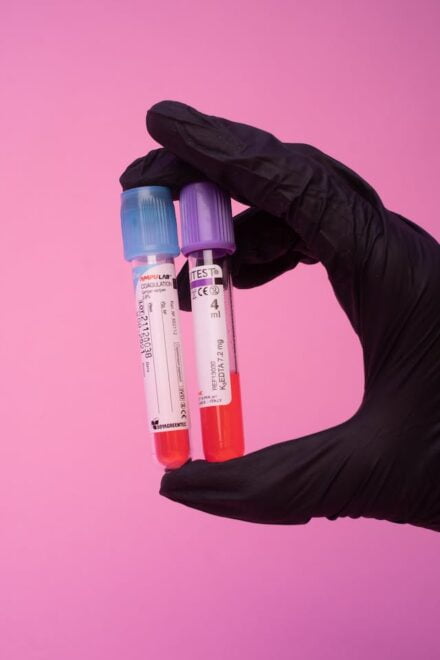
When your dog poops blood? it is anticipated that you will be worried about the health of your pet. Resistance tests in dogs can indicate a variety of problems, from minor gastrointestinal disturbance to more advanced conditions requiring urgent veterinary intervention. This article presents a comprehensive overview of what causes bloody stools in dogs, when it is serious and how you may make sure that your canine receives appropriate care and treatment.
Table of Contents
When your dog poops blood?
Understanding Average Stool of a Well Dog:
Before one can examine possible causes of bloody stools, it is necessary to know what constitutes normal dog stool. Healthy dog stool is often brown in color, formed, and well-shaped with little smell. Changes in the color, texture or frequency could be indicative of underlying health problems like blood.
Causes of Bloody Stools in Dogs:

Dietary Factors: One common cause of bloody stools in dogs is dietary rashness, such as eating something that bothers the gastrointestinal tract or causes irritation. This seem include table scraps, ruined food, or items ingested during outdoor exploration.
Parasitic Infections: In dogs, these include parasites like giardia, hookworms or whipworms. The parasites can destroy the lining of intestines and result in bloodshed and many other GI signs. IBD is a chronic condition that results in inflammation of the gastrointestinal tract. Dogs with IBD may have symptoms such as diarrhea, vomiting, bloody stools and weight loss.
Gastrointestinal ulcers: are the second form of ulcers which causes bleeding leading to bloody stool. Ulceration could be due to factors such as stress, medication or underlying health problems.
anal gland issues: One possible cause of blood in stool is an infected or impacted anal gland. Dog often suffer from anal gland issues which could perhaps be addressed by manual expression or consulting a vet for help.
When to find animal Care:
While occasional digestive upset is normal for dogs, certain signs show a require for quick veterinary attention when your dog poops blood? These signs include.
Persistent or serious bloody diarrhea.
Dormancy or weakness.
Loss of craving.
Vomiting.
Stomach pain or discomfort.
Fever.
Signs of dehydration.
If you watch any of these side effects in your dog, it’s vital to contact your veterinarian instantly. Delaying treatment can worsen your dog’s condition and lead to complications.
Diagnosing Bloody Stools in Dogs:

Treatment Options for Bloody Stools:
Treatment for bloody stools in dogs. will change depending on the basic cause. In many cases, strong care such as liquid treatment and dietary management may be vital to help your dog recover. Specific treatment options may include:
Solutions to address infections, inflammation, or pain.
Dietary changes to alleviate the digestive tract and advance recuperating.
Deworming solutions to eliminate infections.
Surgery intervention for severe cases or underlying anatomical issues.
Your veterinarian will work with you to develop a treatment arrange that addresses your dog’s person needs and maximizes their chances of recovery.
Home Care and Anticipation:
Once your dog is diagnosed and treated for bloody stools, it’s basic to give fitting home care to back their recovery. This may include:
Following your veterinarian’s informational regarding medicine organization and dietary management. Checking your dog’s stools for changes in color, consistency, or recurrence.
Giving a calm, comfortable environment for rest and recovery. Avoiding potential triggers such as table scraps or other dietary careless activities.
In addition to home care, preventive measures can help reduce the chance of repetitive bloody stools in dogs. These measures may include:
Feeding a adjusted diet suitable for your dog’s age, breed, and health status.
Maintaining a regular deworming schedule to prevent parasitic infections.
Providing openings for exercise and mental incitement to back in general health.
Regular veterinary check-ups to screen your dog’s health and address any emerging issues expeditiously.
By executing these preventive measures and remaining careful for signs of digestive disturbed, you can help keep your dog healthy and happy.
Conclusion:
If your dog begins passing blood through his stool, it may raise an alarm but many cases can be managed successfully with immediate veterinary attention and appropriate therapy. By understanding some of the potential triggers of bloody stools, knowing when to consult a veterinarian’s office and taking preventive actions you will help guarantee digestive health as well as overall wellness for your canine companion. Do not forget that for advice and support your veterinarian is your best asset and so do not hesitate to contact him regarding any worries you may have about the health of your pet.
What are the common causes of bloody stools in dogs?
Common causes include dietary indiscretion, parasitic infections, inflammatory bowel disease (IBD), gastrointestinal ulcers, and anal gland issues.
When should I seek veterinary care for my dog’s bloody stool?
Seek veterinary care if your dog experiences persistent or severe bloody diarrhea, lethargy, loss of appetite, vomiting, abdominal pain, or signs of dehydration.
How can I prevent bloody stools in my dog?
Preventive measures include feeding a balanced diet, maintaining a regular deworming schedule, providing exercise, and scheduling regular veterinary check-ups.
